Provides Guidance on Selecting and Installing The Plastics Pipe Institute’s Building & Construction Division has published a major revision of PPI TN-55 “Plastic Piping Materials for Ground Source Geothermal Heating and Cooling Applications”. Originally issued in 2018, the latest edition of TN-55 was published in August 2024 with the input of industry experts including PPI Read more
PEX

Provides Guidance on Selecting and Installing
The Plastics Pipe Institute’s Building & Construction Division has published a major revision of PPI TN-55 “Plastic Piping Materials for Ground Source Geothermal Heating and Cooling Applications”. Originally issued in 2018, the latest edition of TN-55 was published in August 2024 with the input of industry experts including PPI members and the International Ground Source Heat Pump Association (IGSHPA).
According to Lance MacNevin, P. Eng., director of engineering for PPI’s Building & Construction Division, “Because the piping material is critical to the overall success of the ground heat exchanger (GHX) in a geoexchange system, PPI TN-55 focuses on piping, fittings, and manifold materials. TN-55 lists the technical requirements for systems using HDPE, PEX, and PE-RT piping, plus requirements for PP pipes used as indoor piping, headers, and manifolds.”
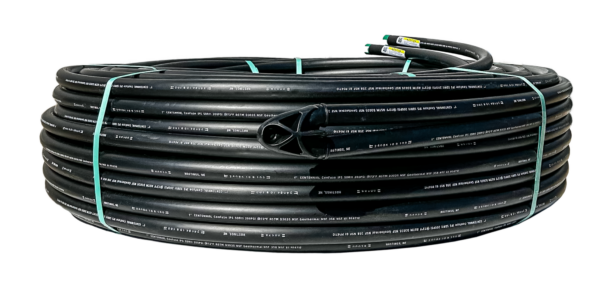
A coil of PE4710 HDPE ground loop piping configured as a premanufactured U-bend assembly. Photo courtesy of Centennial Plastics.
The new technical note describes eight types of installation techniques, such as vertical boreholes, inclined or angled configurations, horizontal directional drilling (HDD), and energy piles, and discusses design topics, such as the effects of borehole depth on static water column pressure. It also addresses why oxygen diffusion barrier layers are typically not required for ground heat exchanger piping.
MacNevin continued, “The new TN-55 is intended to be a valuable resource on piping information, but this is just one of the latest tools available to specifiers and designers of geothermal heating and cooling systems. Details about pipe installation and pressure testing are found in PPI Model Specification MS-7, which published in 2023, and industry codes such as CSA/ANSI/IGSHPA C448 and the Uniform Mechanical Code.”
PPI is the non-profit North American trade association representing the plastic pipe industry, including several manufacturers of geothermal pipes, fittings, manifolds, and vaults. PPI formed its Geothermal Steering Committee in 2018 to develop industry publications, collaborate on codes, and create educational information about these systems.
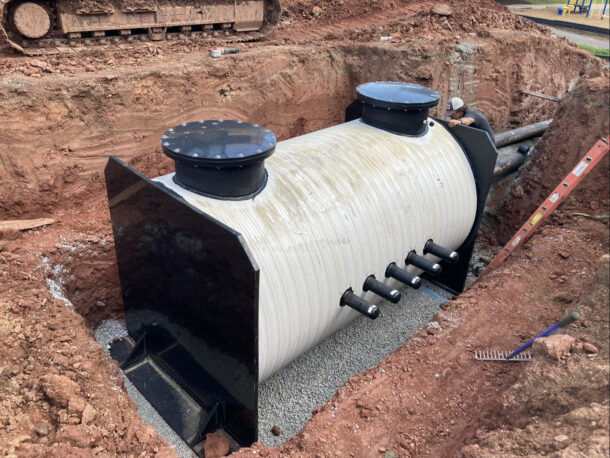
A HDPE vault for connections of ground loop piping. Photo courtesy of PPI.
The revised PPI TN-55 is available directly from PPI at: www.plasticpipe.org/common/Uploaded files/Technical/TN-55.pdf
Additional information and data about ground source geothermal systems are available from the PPI Building & Construction Division at www.plasticpipe.org/buildingconstruction

TotalFit™ is the professional-grade, engineered polymer (EP), push-to-connect fitting solution that provides greater value for residential projects with the same versatility and speed as brass push-to-connect fittings. Ideal for residential repair, maintenance, or remodels for potable hot-water and cold-water distribution piping systems in single-family homes, townhomes, apartments, and condominiums, TotalFit is designed for use with Read more
TotalFit™ is the professional-grade, engineered polymer (EP), push-to-connect fitting solution that provides greater value for residential projects with the same versatility and speed as brass push-to-connect fittings.
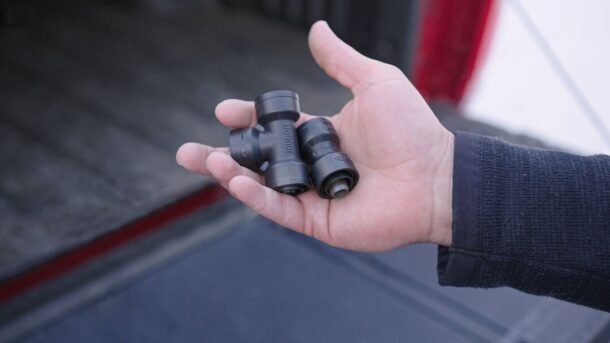
Ideal for residential repair, maintenance, or remodels for potable hot-water and cold-water distribution piping systems in single-family homes, townhomes, apartments, and condominiums, TotalFit is designed for use with PEX, PE-RT, CPVC, and copper piping systems.
The innovation features patent-pending technology to provide a strong, lasting connection professionals can depend on, and TotalFit is one of the only full-featured, EP, push-to-connect fittings on the market.
Available in sizes from ½” to 1″, the TotalFit solution offers about a 30% savings over brass push-to-connect fittings, and it meets or exceeds all performance requirements of the PEX system performance standard, ASTM F877, as well as the push-fitting performance standard, ASSE 1061.
The complete offering is approved by the Uniform Plumbing Code (UPC) and International Plumbing Code (IPC) for direct burial in soil or concrete (with 4 to 6 mil poly wrap) as well as behind walls without access panels. Additionally, the offering is solidly backed by a 25-year product warranty for added peace of mind.
Get more with Uponor TotalFit for residential plumbing repairs, maintenance, and remodels.
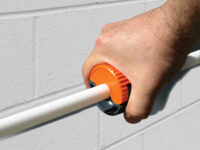
Easily and quickly cut tubing – even in confined spaces – with the AutoCut® family of copper and plastic tubing cutters from General Pipe Cleaners. Offering true “one-hand” operation with no knobs to turn, AutoCut tools for copper tubing are more compact and convenient than using conventional copper tubing cutters. And, AutoCutPL® plastic tubing cutters offer a Read more
Easily and quickly cut tubing – even in confined spaces – with the AutoCut® family of copper and plastic tubing cutters from General Pipe Cleaners.
Offering true “one-hand” operation with no knobs to turn, AutoCut tools for copper tubing are more compact and convenient than using conventional copper tubing cutters. And, AutoCutPL® plastic tubing cutters offer a similarly fast, easy way to cut PEX and CPVC-CTS plastic tubing.
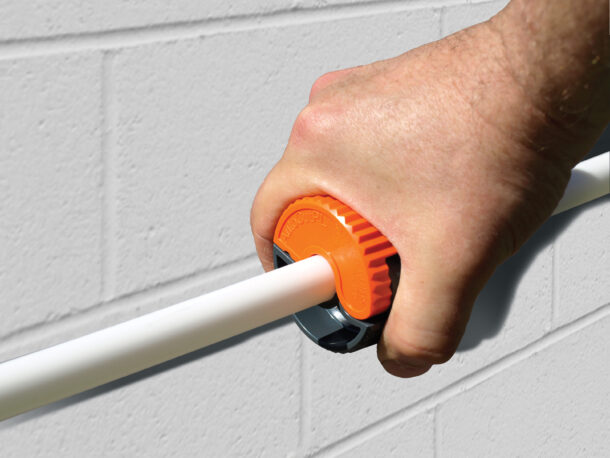
Just close the gate over the tube and, while squeezing the gate closed, rotate AutoCut in the direction of the arrows. The hardened steel cutting wheel automatically tightens as you twist, quickly producing clean, uncrushed, square cuts in as little as one rotation.
Great for use in tight workspaces, AutoCut solutions let you cut tubing with less than one inch of clearance. Both AutoCut and AutoCutPL come in three sizes – 1/2”, 3/4”, and 1”. They fit in the palm of your hand. Carry one of each in your toolbox!
Get hundreds of cuts with accuracy and ease. The handy blade guard protects your fingers – and easily replaceable AutoCut blades – from workplace and toolbox damage.
For more information, contact the Drain Brains® at General at 800-245-6200, or visit https://drainbrain.com/autocut
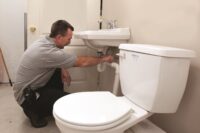
Due to its hot summers and cool winters, planning your kitchen or bathroom renovation in Australia is key to making your home comfortable. Good plumbing is at the heart of this, affecting water use and how cosy your home feels all year round. To help you maintain your Australian home no matter the weather, here Read more
Due to its hot summers and cool winters, planning your kitchen or bathroom renovation in Australia is key to making your home comfortable. Good plumbing is at the heart of this, affecting water use and how cosy your home feels all year round.
To help you maintain your Australian home no matter the weather, here are some plumbing tips that will make your spaces practical and durable, saving you time and money in the long run.
Understand Your Plumbing Layout
Before making any renovations, you should understand your plumbing layout first. This means figuring out where all your pipes and fixtures are located. A handy tip is to look at your house plans for guidance. You could also seek assistance from a professional plumbing service near you.
For example, if you live in Perth or nearby areas, Alpha Sealed WA is just one of many other trusted repair specialists in Australia you can rely on. These professionals can easily map out your system, clarifying the best ways to proceed with upgrades or repairs.
Having the right knowledge ensures that your renovation efforts are both effective and efficient, avoiding unnecessary complications.
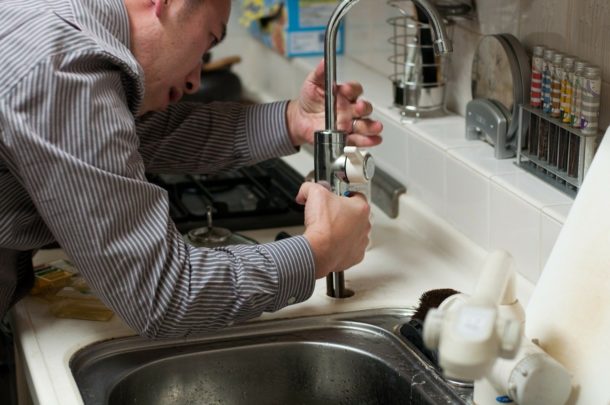
Budgeting for Plumbing
Plumbing improvements can be expensive. So, to prevent any financial surprises, it’s advisable to familiarise yourself with these expenses early in the planning process. Begin by itemising your project’s tasks, from simple fixture replacements to extensive pipe overhauls. Early on, solicit detailed quotes from several reputable plumbers to compare costs and services.
Anticipating unexpected expenses is also an essential part of effective budgeting. Therefore, reserve a portion of your budget for issues that may arise during the renovation process. This proactive approach helps mitigate stress and prevents project delays, ensuring you maintain control over your finances.
Additionally, investing in quality materials and skilled labour upfront can save money in the long term by reducing the need for frequent repairs or replacements. Remember, a well-budgeted project is a smoothly executed project, leading to lasting satisfaction and functionality in your home’s plumbing system.
Choosing the Right Materials
Investing in high-quality plumbing materials reduces maintenance and replacement costs over time. Look for durable, efficient options that can withstand Australia’s variable climate. Materials like stainless steel for pipes and fittings are known for their longevity and resistance to corrosion.
Stainless steel is an outstanding choice due to its durability and resistance to corrosion. Besides stainless steel, copper is also known for its long-lasting qualities. Meanwhile, PEX piping is considered for its flexibility and resistance to breaking under cold conditions.
These materials ensure your renovation project remains both reliable and aesthetically pleasing over time, avoiding the frequent updates that lesser quality materials might necessitate.
Incorporating Eco-Friendly Solutions
Choosing eco-friendly plumbing fixtures is a smart move, as these fixtures can help you save water and reduce your bills. For bathrooms, low-flow showerheads, dual-flush toilets, and water-saving faucets can significantly lower your water usage, benefiting your wallet and the environment.
Meanwhile, tap aerators and efficient dishwashers greatly affect kitchen water use. These choices benefit the planet and make your home more sustainable and cost-effective in the long run.
Avoiding Common Mistakes
Making mistakes during plumbing renovations is easy, but avoiding them can save you time and money. One common error is not getting the proper permits for major plumbing work, which can lead to issues with local regulations. Another mistake is overlooking the need for updated fixtures to match new plumbing layouts, leading to mismatches that can affect both function and design.
These oversights not only increase costs but can also delay your renovation project. Always double-check requirements and compatibility to ensure your renovation goes smoothly and doesn’t face unnecessary hurdles.
Professional Inspection
It is essential to have a professional inspect your plumbing before finishing the job. An inspector ensures everything is up to code, checking for leaks, proper installation, and overall functionality.
This step can catch potential problems early, preventing costly repairs down the line. For homeowners, this means peace of mind knowing their plumbing is safe, efficient, and correctly installed. It’s a protective measure that safeguards against future issues, ensuring the longevity and reliability of your renovation project.
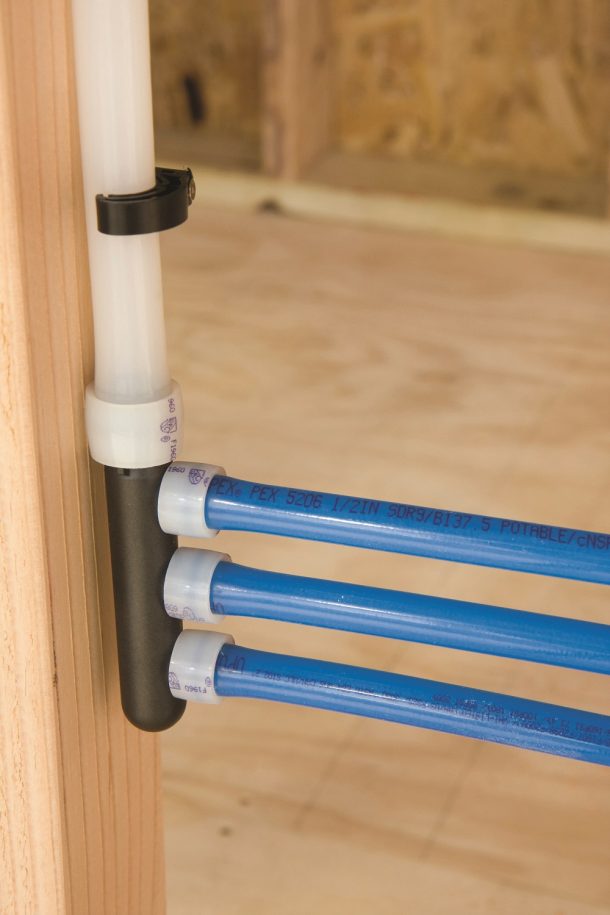
Make Maintenance Easier
Some specific design choices can significantly reduce upkeep efforts, ensuring your bathroom and kitchen remain functional.
For example, you can install access panels for hidden utilities, such as plumbing valves or electrical boxes. So, when repairs are needed, you can easily reach what needs fixing without the hassle of cutting into walls.
Opting for fixtures with modular components also allows for straightforward part replacement. If a piece breaks, you can swap it out without dismantling the entire fixture, saving time and cost.
Additionally, compared to a prefabricated unit, a tiled shower base also offers simpler repair and cleaning opportunities, especially with a removable tile insert at the drain, avoiding extensive demolition for simple issues.
Lastly, you can opt for smart leak detectors, which provide an early warning system for water leaks. These devices prevent potential water damage and facilitate prompt repairs.
Planning for Upgrades
Design your plumbing with future upgrades in mind. Opt for modular components that can be easily adjusted or expanded. Anticipate advancements in technology and potential lifestyle changes. This could mean preparing spaces for smart home water systems or additional fixtures.
Such foresight adds value to your home, ensuring it remains adaptable and up-to-date. This also facilitates the integration of new technologies to accommodate evolving household needs.
Wrapping Up
The right plumbing choices allow homeowners to create spaces that are beautiful, efficient, sustainable, and ready to grow with them. Considering these essential tips, renovators can ensure their projects meet current needs and adapt to their lifestyles. Whether you’re a fan of DIY projects or planning to bring in professionals, these expert suggestions will help you have a successful renovation project that stands the test of time.
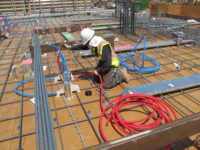
It’s becoming more and more important to do all we can for the planet and to act and work in as eco-friendly a way as possible. In some cases, that can be harder to do than others, or at least harder to come up with ways to do it, but the good news is that Read more
It’s becoming more and more important to do all we can for the planet and to act and work in as eco-friendly a way as possible. In some cases, that can be harder to do than others, or at least harder to come up with ways to do it, but the good news is that if you want to ensure the plumbing work you do or the plumbing around your own home is eco-friendly, there are lots of options. With that in mind, keep reading to find out more.
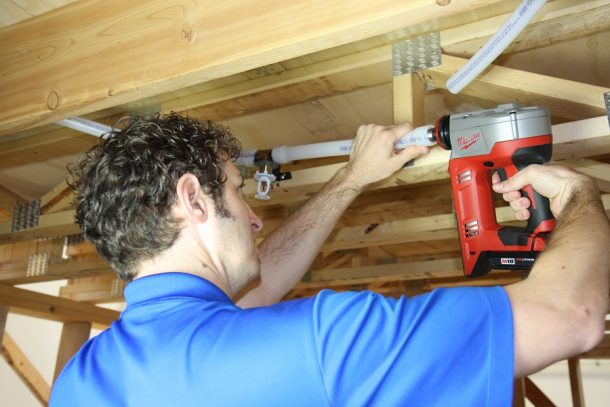
Upgrade To Low-Flow Fixtures
One of the biggest problems when it comes to water and the environment is just how much we tend to waste on a daily basis. Most of the time, we won’t even realize we’re doing it – we’ll leave a tap running for too long, we’ll have a bath rather than a shower, we’ll use our washing machine with just one or two items in it, and so on. It’s not that we’re being intentionally disruptive; it’s just that we don’t think about saving water on a regular basis (possibly because we’re so used to being able to use it whenever we want).
Although the best thing to do is to educate yourself and the rest of your household about how to save water, something that will help in the meantime and, if you do forget in the future, is upgrading to low-flow fixtures. These include taps, toilets, and showers, and they use a lot less water than traditional fixtures. It’s a small change, but it can make a big difference.
Rainwater Harvesting
If you live somewhere that has a lot of rain, why not make use of it? Rather than allow all that precious water to sink into the ground, you can actually have a plumbing system that uses rainwater (in part, at least – there may not be enough to use it exclusively, plus it’s not ideal for drinking water) and saves any wastage (not to mention the fact that you’ll be using less water yourself as a result).
As we’ve said, rainwater can’t be used for everything in your home, but it can be perfect for flushing toilets or keeping your backyard watered, and investing in some rainwater tanks and a new plumbing system to use them could be a great option if you want to be more eco-friendly.
Use Sustainable Materials
If you want or need to upgrade your plumbing system and you also want (and need) to be eco-friendly, make sure you pay attention to the materials you’re using – they need to be sustainable ones because that’s what’s going to make your plumbing system so much better for the environment.
In fact, when you start shopping around, you might even be able to find recycled materials, which is a fantastic option. Otherwise, you can choose things like copper, stainless steel, and PEX, as they’re all great eco-friendly choices as well. Of course, you don’t have to rip everything out and start fresh with sustainable materials right now (that’s actually a waste if there’s no immediate need), but keep the idea in mind for when the time to replace pipes and other elements comes.
